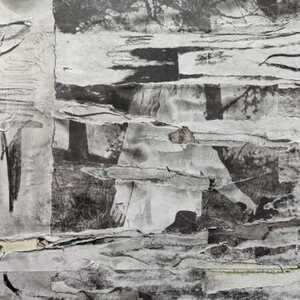Unfolding the Universe
“You have to make me another dragon!” exclaimed AH before I’d even had a chance to sit down. She was referring to the origami dragon I’d made a few weeks before, at some pub, out of a paper placemat. At some point, her husband J (who wasn’t present at The Folding) decided to find out exactly how it was done, and unfolded it all the way back to its natal square. Of course, as is typical in these cases, it was impossible to fold it back into its dragon shape once flattened, and now I was on the hook to produce a replacement.
This urge to unfold the origami, presumably to reveal its mysteries, is something I come across quite frequently. Seeing a folded paper dragon, with four legs, two wings, a tail, and a horn on top of a head at the end of a long neck, is a challenge to many. Was it really folded from a single piece of paper? No cuts? How? And a few minutes later, I’m on the books as owing another dragon.
I think it’s a fairly basic need in most intelligent people, the desire to know that as complicated as something may seem, it’s really just a permutation of objects and processes that are easy to understand. That a flat square of paper can take the form of a dragon is something that requires exploration and examination, just to make sure that the universe is operating as expected and nothing beyond the realm of an ordinary fold is transpiring.
I’m finding parallels between this and what’s going on in my nanotechnology class. We can say that all matter we encounter here on Earth is made up of protons, neutrons and electrons. These in turn are made up of a large number of esoteric and not fully-understood particles, but for our purposes let’s stop at the atomic level, just like we stop at the paper level and not get into the plant fibers and their bonding structure. Our friends the atomic particles are limited in variety, yet they combine to make a seemingly infinite realm of possible materials. Air, water, copper sulfate, sushi – these are all built from protons, neutrons and electrons, yet are as different from each other as you could imagine.
Of course, chemistry and physics have gone a long way towards explaining how these partners dance around each other and form bonds and relationships that give us the characteristics we observe, but the explanation is nowhere near complete. What’s more, new exceptions to the long-accepted psychology of atoms and molecules are being found, as I’m discovering in my nanotechnology class. Imagine two atoms, anthropomorphized into your hippie girlfriend and your nutty über-Republican uncle. Under normal circumstances, they wouldn’t bond. In fact, you could say those two will never bond, and most likely, everyone would say you are right. But take them to a German pub and watch as their mutual interest in fine lagers unfolds, and the next thing you know one of them is saying “we should do this again sometimes.” Things like this happen all the time in nanotechnology – things like gold bonding to DNA.
In a lot of ways, part of nanotechnology is trying to unfold the universe of matter into basic squares of paper, which it can then re-fold and assemble at will. Another part is trying to come up with the tools to actually make these folds – it’s not enough to dream up fantastic molecular objects with esoteric properties if you’re not able to manufacture them in the trillions. Obviously, our fingers aren’t small enough to make those folds, so we must depend on surrogate tools to manipulate these individual atoms and molecules. A lot of current nanotechnological processes are the equivalent of wadding up a billion pieces of paper and sorting through them to find the ones that are most dragon-like.
But there’s no doubt that technology and understanding are progressing at a frenetic pace in this field, and someday, maybe within our lifetime, we’ll be able to fold up whatever we need out of little molecular squares and an instruction book.












